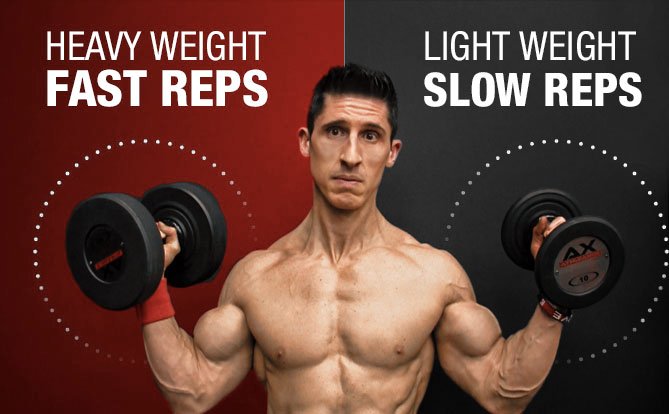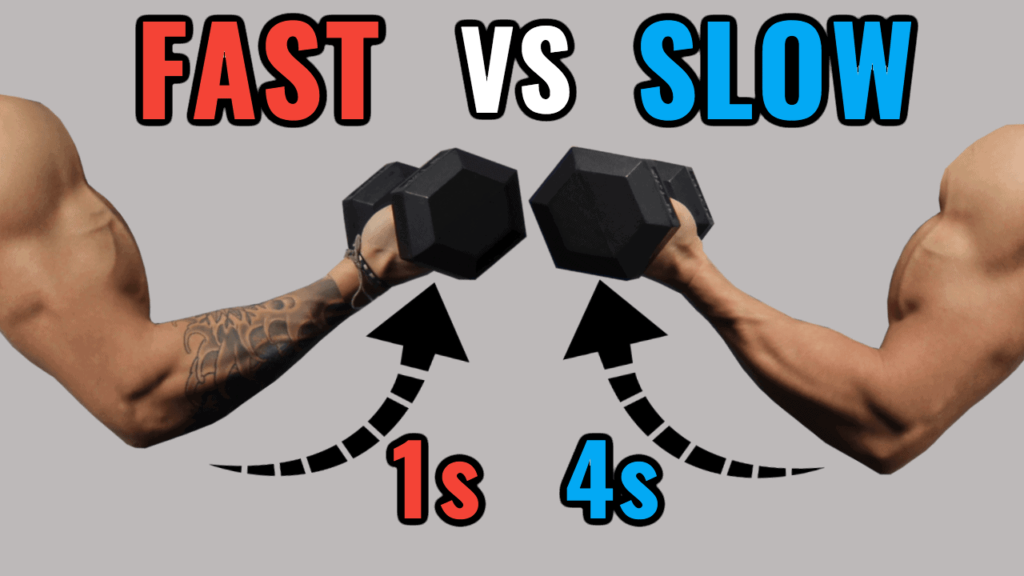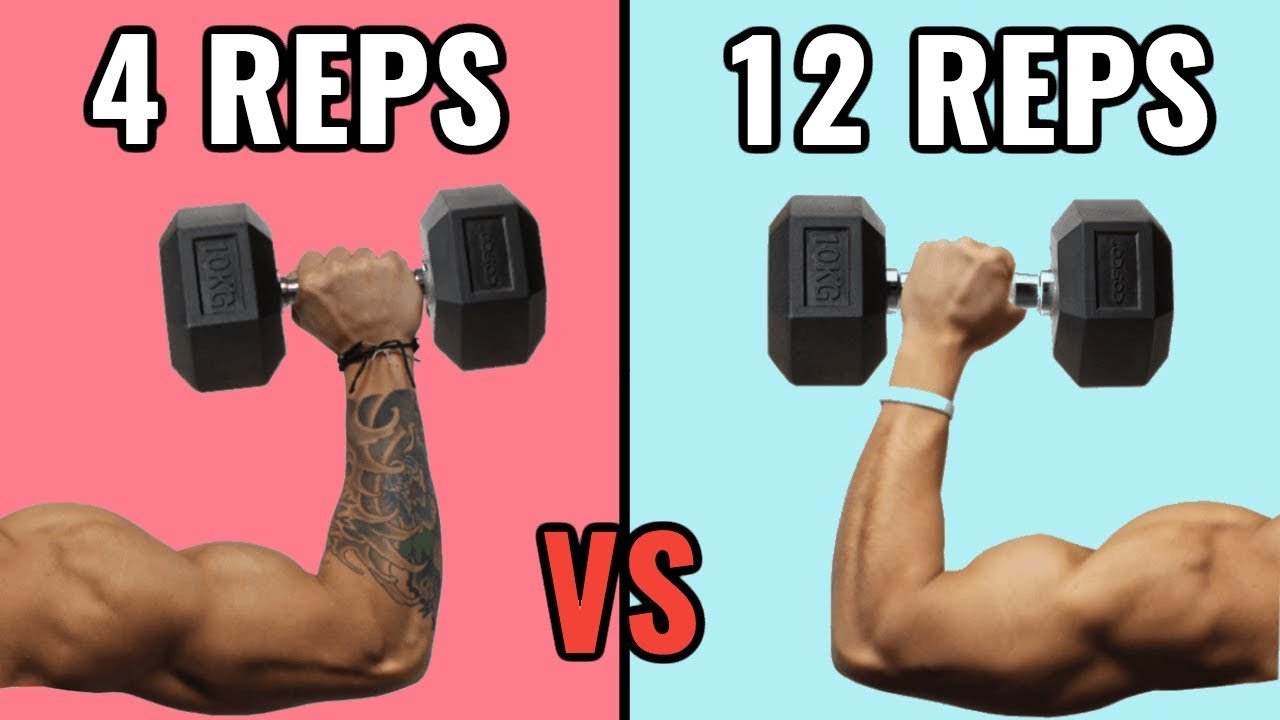When it comes to exercise, the question often arises: should you focus on doing more reps or increasing the weight? The answer may not be as clear-cut as you think. While both approaches have their benefits, it ultimately depends on your fitness goals and personal preferences. In this article, we will explore the advantages of each method, debunk some common myths, and provide guidance on how to strike the perfect balance between reps and weight in your workouts. So, whether you’re aiming for muscle growth or endurance, get ready to uncover the secrets to maximizing your workout effectiveness.

Benefits of High Reps
Improved Muscular Endurance
When you perform high repetitions with lighter weights, your muscles are continuously working for an extended period. This type of training is excellent for improving muscular endurance, which is crucial for activities that require stamina, such as running, cycling, or participating in endurance sports. By doing higher reps, you train your muscles to keep contracting for a more extended period without fatigue, allowing you to perform better in long-duration activities.
Increased Calorie Burn
Engaging in high-rep workouts can significantly contribute to your calorie-burning efforts. When you perform more repetitions, your muscles are constantly working, which leads to increased energy expenditure. This increased calorie burn can be beneficial for those aiming to lose weight or maintain a healthy body composition. Harnessing the power of high reps can elevate your metabolism and help you achieve your weight-related goals.
Enhanced Cardiovascular Health
High-rep training can also have a positive impact on your cardiovascular system. When you perform exercises with lighter weights and higher repetitions, your heart rate elevates, and you experience an increased demand for oxygen. This promotes blood circulation, improves heart health, and enhances your cardiovascular endurance. Incorporating high reps into your workouts can help you achieve an optimal level of cardio fitness and support overall cardiovascular health.
Benefits of Heavy Weight
Increases Muscular Strength
If your goal is to increase raw strength and build a solid foundation of muscle, heavy weight training is the way to go. Lifting heavy loads activates a larger number of muscle fibers, promoting strength gains. With heavy weights, you are challenging your muscles to exert maximum force, thereby triggering adaptations that lead to increased strength. By progressively increasing the weight you lift, you can continuously challenge your muscles, enabling them to adapt and grow stronger over time.
Maximizes Muscle Growth
When it comes to muscle hypertrophy (growth), heavy weight training offers unique advantages. By subjecting your muscles to heavy loads, you stimulate significant muscular damage and mechanical stress. This type of training prompts a cascade of physiological responses that promote muscle growth. When you lift heavy weights, you create micro-tears in your muscle fibers, and during the subsequent recovery process, your body repairs and rebuilds those fibers, resulting in increased muscle size and strength.
Boosts Metabolism
Heavy weight training can also be a valuable tool for boosting your metabolism. Lifting heavier weights requires more energy expenditure during and after your workout compared to lighter load exercises. This is due to the greater demand on your muscles and the need to repair and rebuild damaged muscle tissue. As a result, your metabolism can stay elevated for more extended periods, leading to increased calorie burn even at rest. Incorporating heavy weight training into your routine can provide a long-lasting metabolic boost.
Considerations for High Reps
Lower Weight Range
When focusing on high reps, it is essential to select an appropriate weight range to ensure proper training stimulus. The weight should be challenging enough to cause fatigue within the desired repetition range without sacrificing form. However, it should not be too heavy that it compromises your ability to complete all the repetitions with proper technique. Finding the right balance is crucial to optimize your training and prevent potential injuries.
Higher Time Commitment
Performing high repetitions typically takes longer than lifting heavy weights for fewer reps. Completing a set of fifteen to twenty repetitions may require additional time and effort compared to performing a set of just five repetitions. If you have a limited time window for your workouts, you may need to evaluate the trade-off between the number of reps and the time investment required.
Potential for Overuse Injuries
High-rep training can put your muscles, tendons, and joints under repeated stress. This repetitive stress can increase the risk of overuse injuries, such as tendinitis or muscle strains. It is crucial to listen to your body, gradually increase your training volume, and incorporate adequate rest and recovery days into your routine. Proper form, appropriate warm-ups, and cool-downs, along with periodization, can minimize the risk of overuse injuries associated with high-rep training.
Considerations for Heavy Weight
Form and Technique Are Crucial
When lifting heavy weights, maintaining proper form and technique becomes even more critical. As the load increases, the risk of injury rises if you perform exercises with poor form. Ensure that you have learned the correct form for each exercise or consider working with a qualified trainer to guide and correct your technique. Proper form not only minimizes the risk of injury but also maximizes muscular engagement and benefits.
Recovery Time Is Important
Heavy weight training places significant stress on your muscles, and adequate recovery time is essential for optimal gains. When lifting heavy, you create microscopic tears in your muscle fibers. These tears need time to repair and rebuild stronger than before. It is recommended to allow at least 48 hours of rest between intense strength sessions targeting the same muscle groups. Proper sleep, nutrition, and other recovery strategies also play a vital role in ensuring your muscles have the chance to recover and grow.
Requires Access to Adequate Equipment
To perform heavy weight training, you typically need access to a gym or home gym equipped with a range of free weights, machines, or barbells. Unlike high-rep workouts that can be done with minimal equipment or bodyweight exercises, heavy weight training often requires specialized equipment to provide the resistance needed for significant strength gains. If you choose heavy weight training, ensure you have access to the necessary equipment to perform the exercises safely and effectively.
Combining High Reps and Heavy Weight
Periodization Training
Periodization training involves systematically alternating between different rep ranges and weights to optimize performance and prevent plateaus. By incorporating both high reps and heavy weights into your training program, you can reap the benefits of each while continuously challenging your muscles in different ways. Periodization allows you to adapt your workouts strategically, progressing through different training phases to promote muscular strength, endurance, and overall fitness.
Muscle Confusion
By varying your workout routines and utilizing different rep ranges and weights, you can keep your muscles guessing and prevent them from adapting to a specific training stimulus. This concept, known as muscle confusion, can help you overcome plateaus and promote continuous gains in strength, endurance, and muscle hypertrophy. Incorporating high reps and heavy weights in a well-designed training program adds variety, ensuring consistent progress towards your fitness goals.
Balanced Approach
One effective approach is to strike a balance between high reps and heavy weights. By integrating both into your training regimen, you can enjoy the benefits of improved endurance, increased strength, and maximal muscle growth. This approach provides a well-rounded fitness program that allows you to meet various goals simultaneously, enhancing overall physical performance and health.
Goal-Oriented Training
Strength Training
If your primary goal is to increase raw strength and power, focus on heavier weight training and lower rep ranges. Lift weights that are challenging enough to perform within the 1-6 rep range. This approach emphasizes maximum force production and neural adaptations, leading to improved strength gains.
Endurance Training
For those targeting muscular endurance, higher rep ranges are more effective. Aim for rep ranges of 12 or more, using lighter weights that allow you to perform the desired number of reps without compromising form. This type of training enhances muscular stamina and prepares your body for prolonged physical activities.
Power Training
Power training involves explosive movements that require strength and speed. This type of training incorporates both heavy weights and quick movements. Utilize a rep range of 1-8 repetitions, focusing on lifting explosively and performing exercises that involve power development, such as cleans or snatches. Power training enhances the ability to generate force quickly, leading to improved athletic performance.

Individual Differences
Genetics and Body Type
Individual genetics and body type can significantly impact the response to different training methods. Some individuals may be naturally predisposed to excel in activities requiring high muscular endurance, while others may have a genetic advantage in building strength or muscle mass. Understanding your body’s unique characteristics can help tailor your training approach to optimize results and work with your genetic potential.
Training Experience and Fitness Level
Your training experience and overall fitness level should also be considered. Beginners may benefit from starting with lighter weights and higher rep ranges to develop proper form and technique while gradually building strength. Advanced lifters may incorporate heavier weights and lower rep ranges to continue challenging their well-developed muscles.
Specific Goals and Preferences
Ultimately, your specific goals and preferences should guide your choice of training approach. Consider what you enjoy and what you want to achieve. If you prefer activities that require stamina and endurance, focusing on high reps may be more suitable. If you aspire to maximize strength or muscle growth, incorporating heavy weight training should be a priority. Tailoring your workouts to align with your goals and personal preferences will help you maintain motivation and achieve the results you desire.
Progressive Overload
Principle of Strength and Muscle Gains
Progressive overload is a fundamental principle in strength training that involves systematically increasing the demands placed on your muscles over time. To continue making gains in strength and muscle size, you need to progressively increase the challenge to your muscles. This can be achieved by adding weight, increasing repetitions, adjusting sets, or manipulating other variables in your training program.
Varying Rep Ranges and Weight
Incorporating a variety of rep ranges and weights within your training program allows for progressive overload while targeting different aspects of muscular fitness. By alternating between high reps and heavy weights, you continuously challenge your muscles, preventing adaptation and promoting continuous gains.
Gradual Increase in Intensity
Progressive overload should be implemented gradually and with caution. Rapidly increasing weight or volume without allowing your body to adapt can lead to overuse injuries or hinder progress. Gradually progressing in intensity and difficulty ensures that your body has sufficient time to recover and adapt, enabling you to sustain consistent progress over the long term.

Optimal Rep Range for Different Goals
Strength and Power
For maximum strength and power gains, focus on lower rep ranges ranging from 1-6 repetitions. This rep range allows you to lift heavier weights, placing a greater demand on your muscles and neural system. By concentrating on force production and explosive movements, you can develop the strength and power necessary for activities like weightlifting or sprinting.
Muscle Hypertrophy
To maximize muscle growth, a rep range of 6-12 repetitions is typically recommended. This range provides an optimal balance between mechanical tension and metabolic stress, which stimulates muscle hypertrophy. By challenging your muscles with moderate weights and higher rep ranges, you can induce the muscle damage and metabolic responses necessary for muscle growth.
Muscular Endurance
For improving muscular endurance, higher rep ranges exceeding 12 repetitions are effective. The focus here is on muscle stamina, training your muscles to continuously contract for extended periods. By utilizing lighter weights and performing more repetitions, you enhance your muscular endurance, which is essential for activities requiring prolonged effort, such as long-distance running or cycling.
Conclusion
When it comes to the question of whether it is better to do more reps or more weight, there is no definitive answer that applies to everyone universally. The optimal approach depends on your specific goals, preferences, and individual factors such as genetics, fitness level, and experience. By considering the benefits and considerations of both high reps and heavy weight training, you can tailor your workouts to meet your specific needs.
A balanced approach that combines both high-rep and heavy weight training can provide a well-rounded fitness program that maximizes muscular endurance, strength gains, muscle hypertrophy, and overall athletic performance. Incorporating periodization, muscle confusion, and goal-oriented training can help you overcome plateaus, continuously progress, and prevent boredom.
Regardless of the approach you choose, it is crucial to practice proper form and technique, prioritize recovery time, and gradually increase the intensity of your workouts through progressive overload. Listening to your body, considering your personal goals and preferences, and continually individualizing your training approach will ultimately lead to the most effective and enjoyable fitness journey.



